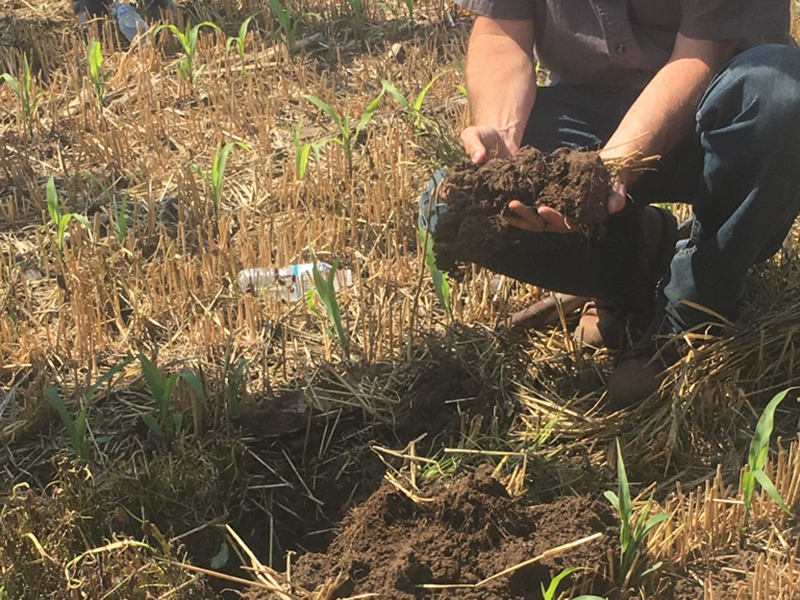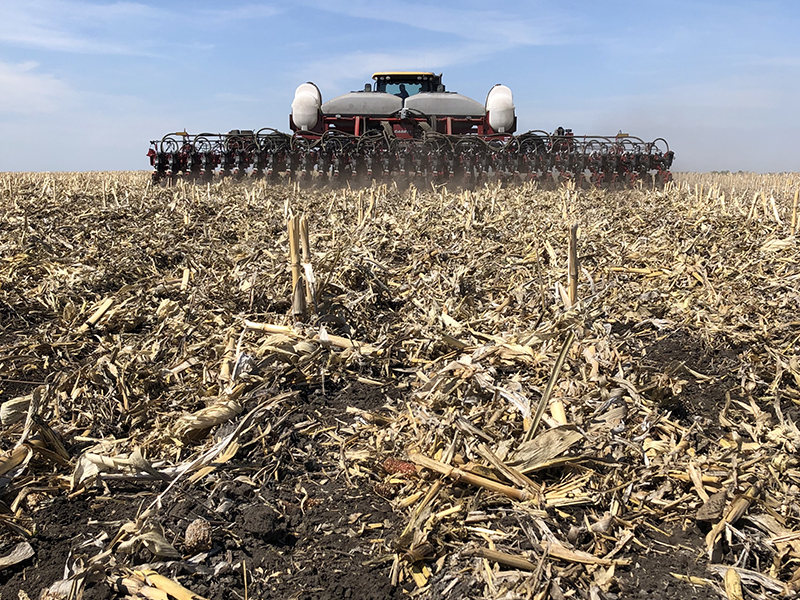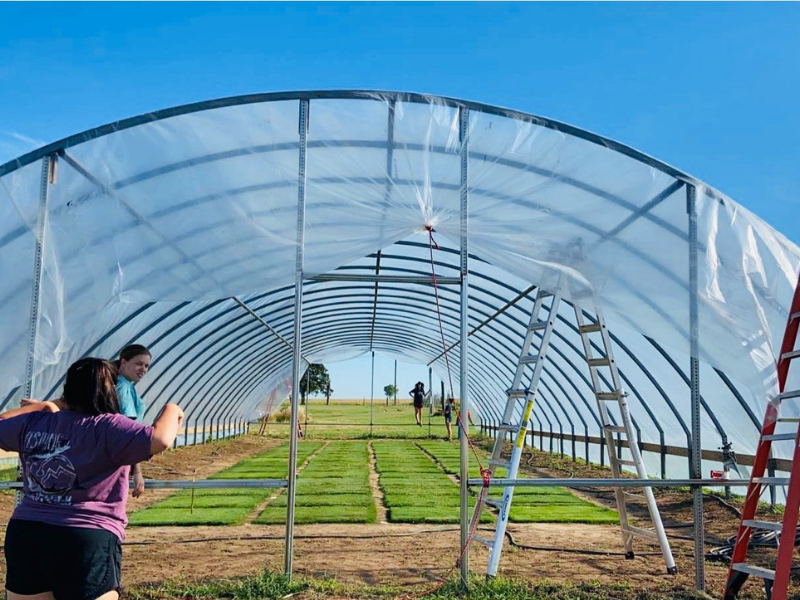Determining outcomes of on-farm best practices
February 21, 2022 - Susan V. Fisk
Baking a cake from scratch has more variables than baking one from a boxed mix. Though one can debate why – and when – cake mixes were developed, they are popular, and produce a uniform product. (They were really patented in the 1930s!)

Scientific research is much like that cake mix – very controlled. Putting recommendations into practice, say from greenhouse and field studies onto the farm, loses some of the control. In this way, practicing farming is more like baking from scratch than baking from a boxed mix.
However, it’s important to find out what the results are on those farm fields. Do they yield similar results to what the research suggests?
Emily Oldfield and a team of researchers across the upper Midwest tackled this question. They recently published their results in Soil Science Society of America Journal, a publication of the Soil Science Society of America.
The team specifically was looking at the relationship between soil organic matter and corn yields. They compiled data from 170 corn fields from 49 different farms. The farms were in a network of growers based in Wisconsin and Minnesota.
“Loss of organic matter on farms is a major global issue,” says Oldfield. “It is associated with a loss of soil fertility which supports crop growing and yields. It can decrease food security, diminish rural livelihoods and threaten freshwater systems.”

In response to these issues, multiple studies have showed a variety of best practices that farmers can implement. They range from no-till to crop rotation to adding manure to soil. All these practices can increase the amount of soil organic matter. The study by Oldfield and her collaborators quantifies how implementing these practices affects both soil organic matter and crop yields on working farms.
“In research fields, scientists can control many variables,” says Oldfield. “They can set up plots to minimize the differences in soil type and soil texture (sandy or silty). In greenhouse studies, the temperature and day length can be highly controlled.”
But farmers practice out in all the elements. This is why determining the outcomes of using various practices on actual farms is important.
This study showed that, indeed, there is a positive relationship between the amount of soil organic matter and crop yields.
The results regarding the practice of manure application were less clear. This could be due to the timing of manure applications on the different farm fields. “The addition of manure as a readily available organic source of nutrients is clearly important within this regional context,” says Oldfield. “It has also been shown to have positive benefits on soil health. Our analysis shows that nitrogen from manure as well as fertilizer and soil organic matter all have strong associations with agricultural productivity in this region.”

The study also found that the relationship between crop yields and soil organic matter was different depending on crop rotation. For example, fields planted in continuous corn had, on average, higher soil organic matter contents but lower yields. Corn planted in rotation (corn-soy and corn-oat-alfalfa) resulted in high yields.
“The benefits of crop rotation on yields are well known,” says Oldfield. “Many studies show that increased crop diversity can lead to higher yields. Diversified cropping systems have been shown to higher yields of maize under both normal and adverse weather conditions. They can also help with pest and pathogen management.”
“Farmers making management decisions based on transformations in their practices need to know the potential impact that improving soil health might have on their profitability,” says Oldfield. “This requires an understanding of the relationship between yield, indicators of soil health and management in the context of inherent variation in soil properties and climate.”
“Because our data comes from working farms, they incorporate relevant variability in practices that are difficult to integrate into controlled field experiments,” says Oldfield. “Our results suggest that, within this regional context, increases in soil organic matter levels in surface soils, coupled with increasing crop rotational diversity, may generate higher agronomic returns.”
This work was completed with the cooperation of University of Wisconsin Discovery Farms and Discovery Farms Minnesota program. Funding for this research was provided in part by two USDA NRCS Conservation Innovation Grants (69-3A75-17-11 and 69-3A75-14-270) and a SARE Graduate Student grant (GNC17-249). Work by the Environmental Defense Fund was funded by the High Meadows Foundation for post-doctoral fellowships.
